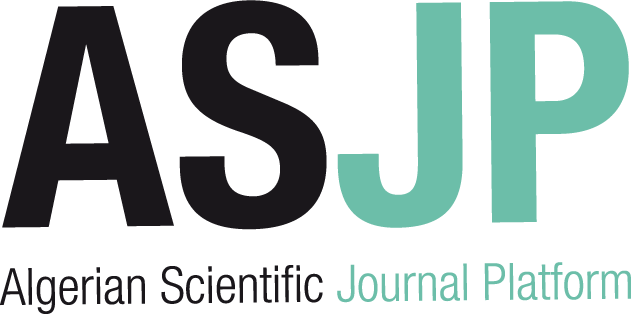[article]
| Titre : |
Optimization of heterogeneous batch extractive distillation |
| Type de document : |
texte imprimé |
| Auteurs : |
Alien Arias Barreto, Auteur ; Ivonne Rodriguez-Donis, Auteur ; Vincent Gerbaud, Auteur |
| Année de publication : |
2011 |
| Article en page(s) : |
pp. 5204–5217 |
| Note générale : |
Chimie industrielle |
| Langues : |
Anglais (eng) |
| Mots-clés : |
Optimization |
| Résumé : |
Heterogeneous extractive batch distillation of the chloroform−methanol minimum-boiling-temperature azeotropic mixture is studied with water as a heterogeneous entrainer. The continuous feeding of water allows recovery of 99 mol % chloroform after condensation of the saddle binary heteroazeotrope water−chloroform. Unlike a homogeneous process, the reflux composition is different from the heteroazeotrope water−chloroform in the vapor overhead. Besides, the distillate recovery is improved by refluxing a portion α of the chloroform-rich distillate phase along with the water-rich entrainer phase. A genetic algorithm is coupled to a constant molar overflow model to study seven operation policies. Optimization parameters are the entrainer flow rate FE/V, the portion αT3 of the distillate-rich phase refluxed to the column during chloroform distillation, and the reflux policy RT5 during methanol distillation. The optimization maximizes a profit function, penalized with recovery yield constraints, whereas purity targets are used as task ending events. All optimized solutions achieve higher than 90 mol % recovery yields and 99 mol % purity for both products chloroform and methanol. The results are confirmed by rigorous simulation showing the good performance of coupling a simplified model and a genetic algorithm as a first approach. The two-piece-wise parameter value operation policies for all three parameters increase profit by 41.8% and reduce total time by 43.8% compared to the single value parameter policy. The parameter influence study ranks RT5 first, αT3 second, and FE/V last. Keeping FE/V constant and using the two-piece-wise αT3 and RT5 value operation is recommended to increase profit. |
| DEWEY : |
660 |
| ISSN : |
0888-5885 |
| En ligne : |
http://pubs.acs.org/doi/abs/10.1021/ie101965f |
in Industrial & engineering chemistry research > Vol. 50 N° 9 (Mai 2011) . - pp. 5204–5217
[article] Optimization of heterogeneous batch extractive distillation [texte imprimé] / Alien Arias Barreto, Auteur ; Ivonne Rodriguez-Donis, Auteur ; Vincent Gerbaud, Auteur . - 2011 . - pp. 5204–5217. Chimie industrielle Langues : Anglais ( eng) in Industrial & engineering chemistry research > Vol. 50 N° 9 (Mai 2011) . - pp. 5204–5217
| Mots-clés : |
Optimization |
| Résumé : |
Heterogeneous extractive batch distillation of the chloroform−methanol minimum-boiling-temperature azeotropic mixture is studied with water as a heterogeneous entrainer. The continuous feeding of water allows recovery of 99 mol % chloroform after condensation of the saddle binary heteroazeotrope water−chloroform. Unlike a homogeneous process, the reflux composition is different from the heteroazeotrope water−chloroform in the vapor overhead. Besides, the distillate recovery is improved by refluxing a portion α of the chloroform-rich distillate phase along with the water-rich entrainer phase. A genetic algorithm is coupled to a constant molar overflow model to study seven operation policies. Optimization parameters are the entrainer flow rate FE/V, the portion αT3 of the distillate-rich phase refluxed to the column during chloroform distillation, and the reflux policy RT5 during methanol distillation. The optimization maximizes a profit function, penalized with recovery yield constraints, whereas purity targets are used as task ending events. All optimized solutions achieve higher than 90 mol % recovery yields and 99 mol % purity for both products chloroform and methanol. The results are confirmed by rigorous simulation showing the good performance of coupling a simplified model and a genetic algorithm as a first approach. The two-piece-wise parameter value operation policies for all three parameters increase profit by 41.8% and reduce total time by 43.8% compared to the single value parameter policy. The parameter influence study ranks RT5 first, αT3 second, and FE/V last. Keeping FE/V constant and using the two-piece-wise αT3 and RT5 value operation is recommended to increase profit. |
| DEWEY : |
660 |
| ISSN : |
0888-5885 |
| En ligne : |
http://pubs.acs.org/doi/abs/10.1021/ie101965f |
|


 Ajouter le résultat dans votre panier Faire une suggestion Affiner la recherche
Ajouter le résultat dans votre panier Faire une suggestion Affiner la rechercheOptimization of heterogeneous batch extractive distillation / Alien Arias Barreto in Industrial & engineering chemistry research, Vol. 50 N° 9 (Mai 2011)











